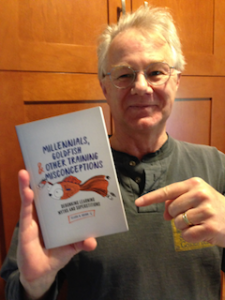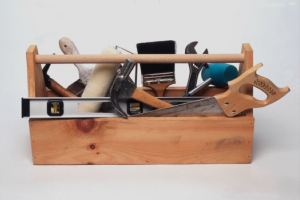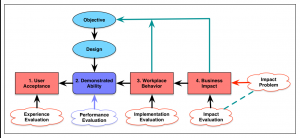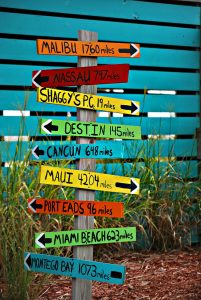In thinking through my design checklist, I was pondering how information comes from SMEs, and the role it plays in learning design. And it occurred to me visually, so of course I diagrammed it.
The problem with getting design guidance from SMEs is that they literally can’t tell us what they do! The way our brains work, our expertise gets compiled away. While they can tell us what they know (and they do!), it’s hard to get what really needs to be understood. So we need a process.
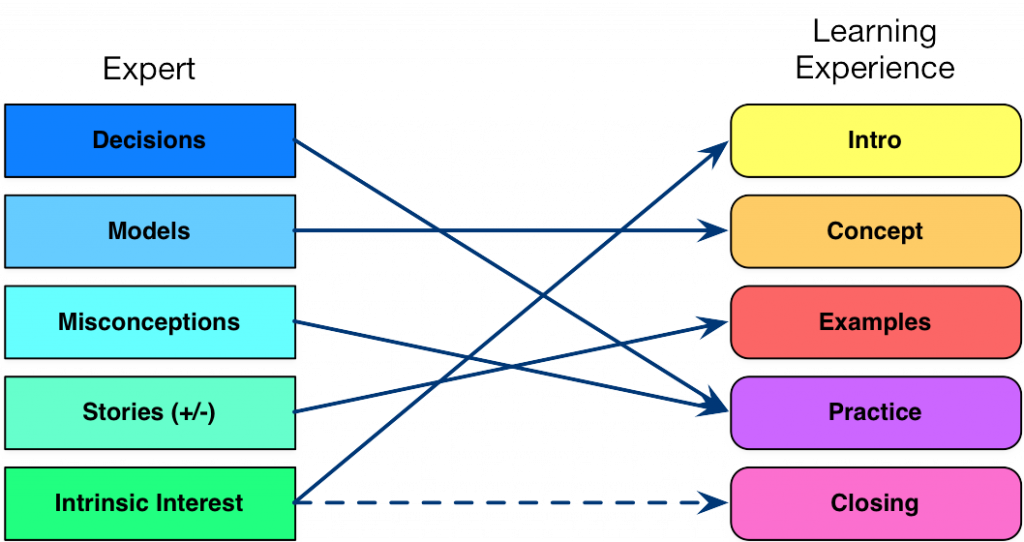 My key is to focus on the decisions that learners will be able to make that they can’t make now. I reckon what’s going to help organizations is not what people know, but how they can apply that to problems to make better choices. And we need SMEs who can articulate that. Which isn’t all SMEs!
My key is to focus on the decisions that learners will be able to make that they can’t make now. I reckon what’s going to help organizations is not what people know, but how they can apply that to problems to make better choices. And we need SMEs who can articulate that. Which isn’t all SMEs!
That also means that we need models. Information that helps guide learners’ performance while they compile away their expertise. Conceptual models are the key here; causal relationships that can explain what did happen or predict what will happen, so we can choose the outcomes we want. And again, not all SMEs may be able to do this part.
There’s also other useful information SMEs can give us. For one, they can tell us where learners go wrong. Typically, those errors aren’t random, but come from bringing in the wrong model. It would make sense if you’re not fully on top of the learning. And, again we may need more than one SME, as sometimes the theoretical expert (the one who can give us models and/or decisions) isn’t as in tune with what happens in the field, and we may need the supervisor of those performers.
Then, of course, there are the war stories. We need examples of wins (and losses). Ideally, compelling ones (or we may have to exaggerate). They should be (or end up) in the form of stories, to facilitate processing (our brains are wired to parse stories). Of course, after we’re done they should refer to the models, and show the underlying thinking, but that may be our role (and if that’s hard, maybe we either have the wrong story or the wrong model).
Finally, there’s one other way experts can assist us. They’ve found this topic interesting enough to spend the years necessary to be the experts. Find out why they find it so fascinating! Then of course, bake that in.
And it makes sense to gather the information from experts in this order. However, for learning, this information plays roles in different places. To flip it around, our:
- introductions need to manifest that intrinsic interest (what will the learners be able to do that they care about?)
- concepts need to be presenting those models
- examples need to capture those stories
- practice need to embed the decisions and
- practice needs to provide opportunities to exhibit those misconceptions before they matter
- closing may also reference the intrinsic experience in closing the emotional experience
That’s the way I look at it. Does this make sense to you? What am I missing?

